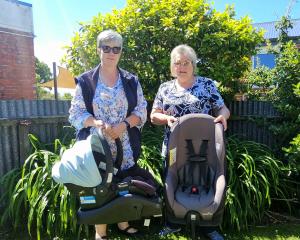The moa exhibition takes up most of the space in the former courtroom, one of the buildings in Shearman St which houses the museum.
It is part of a programme put in place two years ago by the Waimate Historical Society.
The exhibition explores the evolution, life and extinction of the giant bird, featuring moa bones, explanatory boards, murals and even a sandpit where children can dig for a wide species of bones and then identify from a board what species they derive.
Some of the bones have come from the Kapua site at Arno, just south of the Waimate Gorge, where moa became trapped in spring holes in what was a swamp.
The site was discovered in 1895 by a farmer, a Mr MacDonald, who notified Julius von Haast, founder of the Canterbury Museum.
The Canterbury Museum's director, Captain Frederick Woollaston Hutton, bought the site excavation rights for 20.
The only other major dig was in 1984.
Some of the bones, still bearing tags written by Capt Hutton, ended up at the Waimate Museum, but the bulk went to the Canterbury Museum because of its larger storage. The first dig resulted in about 800 skeletons.
The exhibition was almost derailed by the earthquake in Christchurch last month closing the Canterbury Museum, which was going to lend bones to the Waimate Museum. But Otago Museum stepped up at short notice and has sent a large container of bones for the exhibition, which runs until November 18.












